Bharat has a number of Holy and Religious festivals and traditions. However, most people view and celebrate them merely as age-old practices; they do not pay attention to the underlying science and their deeper meaning. If the underlying science of the Holy and Religious festivals is known, they can be celebrated with added faith. This article explains the importance and benefits of vrat and the aspects on which the benefits of vrat depend upon.
1. Importance and benefits of vrat
The Bharatiya scriptures have advocated the code of conduct depending on place, time and circumstances. The code of conduct advocated by the Vēdās is very difficult for an average person to adhere to. To overcome this difficulty and to make it convenient for everyone to follow the code of conduct and to facilitate their spiritual upliftment, the Purāṇs (The eighteen sacred Holy texts compiled by Sage Vyās) have recommended vrats.
A. Physical and mental health:
-
Rotation is the inherent nature of the earth. This rotation constantly brings about changes. For example, day and night are caused due to rotation of the earth about itself. Its revolution around the sun is responsible for the various seasons. Vrats have thus been recommended to help the body and mind to adapt to these changes.
-
Bhīshmāchārya had undertaken a vrat of not fighting against a woman; hence, he did not fight Shikhandī who was a woman in his past birth. In the Bharatiya war (Mahābhārat), when struck by Shikhandī’s arrows, Bhīshmāchārya experienced Bliss instead of pain.
B. Vrat is mandatory for those who perform the fire sacrifice : In the Holy text Aitrēya Brāhmaṇ it is said that Deities do not accept an oblation by someone who has not undertaken a vrat.
C. Cleansing of sins:
व्रतोपवासनियमैःशरीरोत्तापनैस्तथा ।
वर्णाःसर्वेऽपिमुच्यन्तेपातकेभ्योनसंशयः ।। – देवल
Meaning: Undoubtedly, by undertaking vrats, fasts, following restraints and penance, all the varṇas (classes) are cleansed of their sins. Since diseases are very much a consequence of sins, physical, mental and contagious diseases are also overcome by undertaking vrat.
D. Vratambhāgyam (Vowed religious observances bestowing fortune) : By undertaking a vrat, favourable destiny is generated. As a result, unhappiness and crises are resolved and benefits like wealth, fame, success, longevity, health etc. are obtained.
E. Vratampuṇyam (Vowed religious observances endowing merits) : Merits are acquired by undertaking vrat.
F. Vratamyadnyaha (Vowed religious observances equivalent to a sacrificial fire) : There is a Sanskrut quote, ‘यज्ञात्भवतिपर्जन्यः ।’ – A vrat by itself is a sacrificial fire, and therefore it results in benefits such as rainfall and Universal peace.
-
Benefit obtained by performing most sacrificial fires is attaining of heaven and it is attained only after death; whereas, with vrats the doer benefits in this birth itself.
-
Only the three upper varṇas are entitled to perform Vēdic sacrificial fires. However, vrats may be undertaken by even Shudras (labour class), virgins, married women, widows and prostitutes.
G. Vratamtapah (Vowed religious observance as penance) : According to the Jabalopanishad-darshana, vrat is a kind of penance by itself. A vrat bestows all the benefits of penance.
H. Vratam Dēvēsh-pujanam (Vowed religious observance as a form of worship of God) : A vrat is by itself a ritualistic worship of a Deity. Consequently, Deities are appeased.
I. Attainment of God: The Kurma-Purāṇ proposes that by following a vrat, one can attain God.
व्रतोपवासैर्नियमैर्होमैर्ब्राह्मणसंतर्पणैः । तेषां वै रुद्रसायुज्यंजायतेतत्प्रसादतः ।।
Meaning: One attains Sayujya Muktī (Being one with God) as a Prasād (Holy sacrament) for undertaking a vrat, a fast, following the regulations of the path of Yoga, performing a sacrificial fire and Brāhmaṇ-santarpaṇ (offering water to a Brahman or a Saint).
J. Overcoming the three defects : All living beings have three personality defects, namely mal (Evil intent), vikshēp (Whims) and āvaraṇ (Covering of negativity). They can be eliminated by undertaking the regular and incidental vrats as per the scriptures.
-
Defect of evil intent: Holy men have called the desire to fulfill the thoughts like consumption of forbidden food or drink, adultery, stealing money, evil thoughts, behaviour contrary to the scriptures etc. as defects of evil intent. Performing regular and incidental vrats destroys this defect, whereby the subconscious mind gets purified and leads to development of spiritual love for God.
-
Defect of whims: After development of intense spiritual love for God, performing the regular and incidental vrats with the intent of surrender of intellect unto God, the personality defect of whims disappears.
-
Defect of negative covering: After the defect of whims disappears, self-control is generated in its place. Thereafter, one develops faith in the Guru and the Vēdic quotes and the defect of negative covering on the intellect is destroyed. Then one acquires spiritual knowledge and attains Moksha (Final Liberation).
K. Vratam-sarvārthsādhanam (Ability of a Vowed religious observance): Everything can be achieved by performing a vrat.
L. Maximum benefits with minimal effort: Even those who do not have a Guru can derive maximum worldly and spiritual benefits by following a vrat with minimal effort, expenditure etc.
M. Social unity: Vrats have played a major role in creating oneness in Hindu families and unity in the society. An illustration is the pilgrimage to Pandharpur on Āshādhi Ēkādashī (Eleventh day in the bright fortnight of the month of Āshādh).
N. The importance attached by Saints to vrats
-
Performing vrats by bathing in the months of Kārtik and Māgh, completion of the rituals and giving donations, undertaking pilgrimages and fasts without any expectations are all attributes of the Sattva – Shrī Dāsbodh 2.7.17
-
A pilgrimage or performance of a vrat maintains the bhāv (Spiritual emotion) of compassion. – Shrī Dnyānēshvar Haripath, Bhajan 27
O. Advise given by Saints on observing vrats: God knows how those who do not observe a vrat on the day of Ēkādashī or Monday will be liberated! Those who partake food on the day of Ekādashī are akin to the excreta of a dog.– Saint Tukārām Mahārāj
2. What do the benefits of vrat depend upon?
One should not harbour doubts on why one has not yet benefitted by performing a vrat. Some benefit from it immediately, while in other cases it may be delayed. However, the benefit is certain. The benefits of vrat depend mainly on the following factors.
A. Devotion: In a vrat, more importance is given to devotion. A vrat performed without devotion becomes merely a mechanical act.
B. The sankalp (Resolve): Mr. Rajabhau Paranjape from Thane is an initiated disciple of Shrī Gurumaharaj, that is, Shrī Gulavani Maharaj and a devotee of Shrī Baba Maharaj. He was not benefited from the periodic recitation of the Holy text Shri Gurucharitra. He expressed this doubt to Shrī Baba. Maharaj said, “We shall broach this subject with Shrī Gulavani Maharaj when we go to Pune.” Later Mr. Paranjape took Shrī Baba Maharaj to Pune. Shrī Baba Maharaj asked Mr. Paranjape to put his question to Shrī Gurumaharaj. When Mr. Paranjape asked the question, Shrī Gurumaharaj said, “Do you start reading the Holy text with a sankalp or not?” Mr. Paranjape replied, “I do not know how to make a sankalp, nor am I aware of any process of sankalp. I just start reading the Holy text and that is all.” Shrī Gurumaharaj then taught him how to make a sankalp and how to study the panchāng (Hindu almanac). Mr. Paranjape then began getting good experiences as a result of his periodic readings
C. The influence of time: The Chaturthī (Fourth day in a Hindu lunar fortnight) of Shrī Gaṇesh in the bright and dark fortnights are Vinayakī and Sankashtī respectively. When they fall on a Tuesday, they are referred to as Angarakī. The benefit obtained by performing one Angarakī is equivalent to that obtained by performing Vinayakī and Sankashtī throughout the year. The benefit obtained from undertaking one Nirjala (without consuming any water). Ekadashī is equivalent to that obtained by performing twenty-four Ekadashīs. The majority of the vrats fall between Pratipada and the Saptamī (7th day in a Hindu lunar fortnight) or Ashtamī (8th day in a Hindu lunar fortnight) days, because at that time waxing of the moon occurs and the chances of fulfillment of the purpose of the vrat go on increasing.
D. An evolved person’s sankalp and ridiculous modern observances: There is the sankalp of some evolved person or some spiritual tenet in every vrat and accordingly benefits are gained from them. If someone recommends as a modern vrat building of a school, nursing of the sick etc. then it will not yield any benefits.
Reference: Sanatan Sanstha’s Holy Text ‘Holy festivals, Religious festivals and Vowed religious observances’

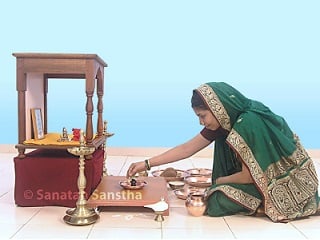
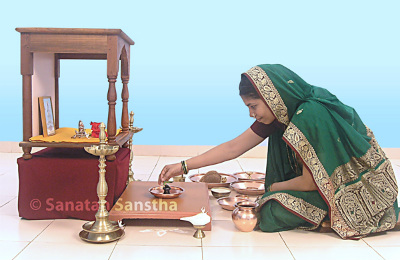
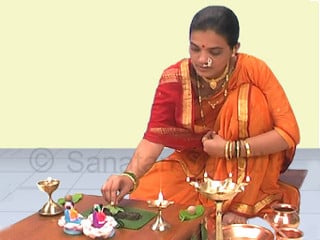 What is a vrat (Vowed religious observance)?
What is a vrat (Vowed religious observance)?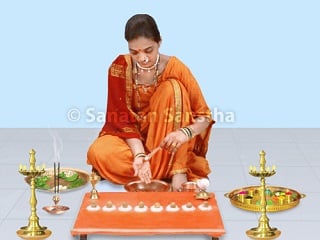 Types of vrats (Vowed religious observances)
Types of vrats (Vowed religious observances)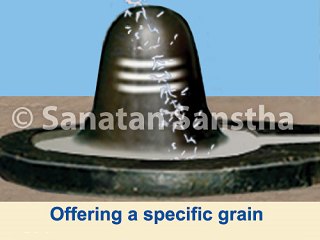 Vrat Rules to be followed by those undertaking Vrats
Vrat Rules to be followed by those undertaking Vrats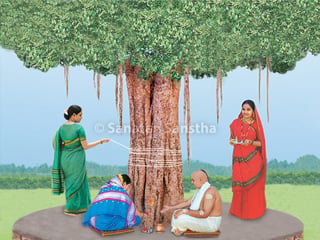 Vat purnima
Vat purnima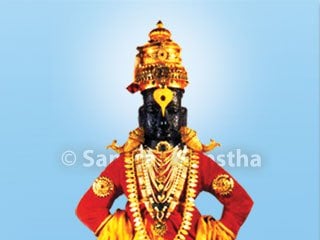 Ashadhi Ekadashi
Ashadhi Ekadashi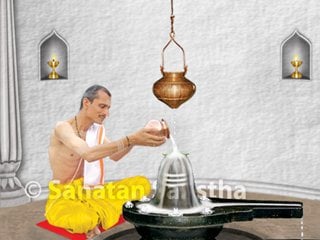 Shravan maas vrats and rituals
Shravan maas vrats and rituals